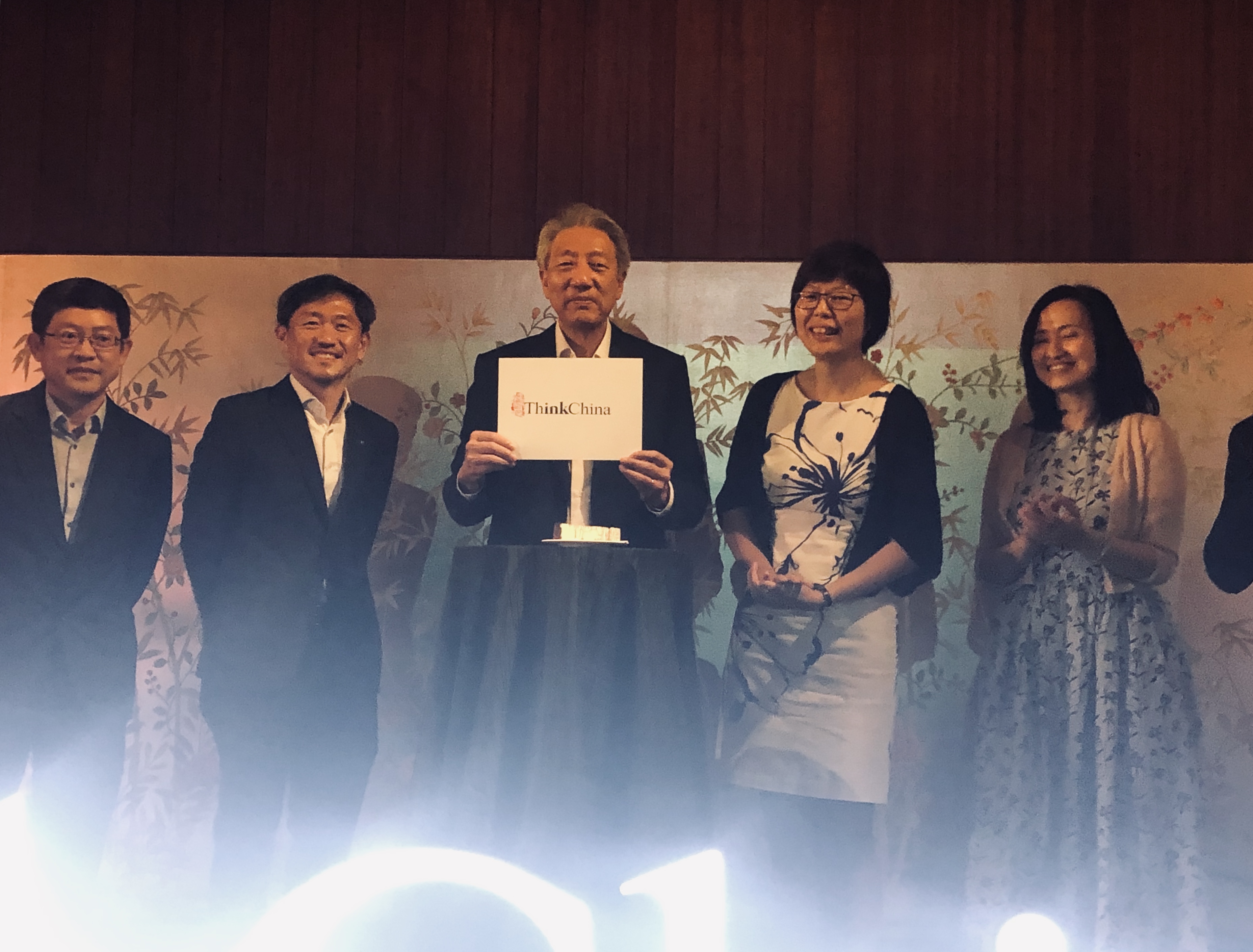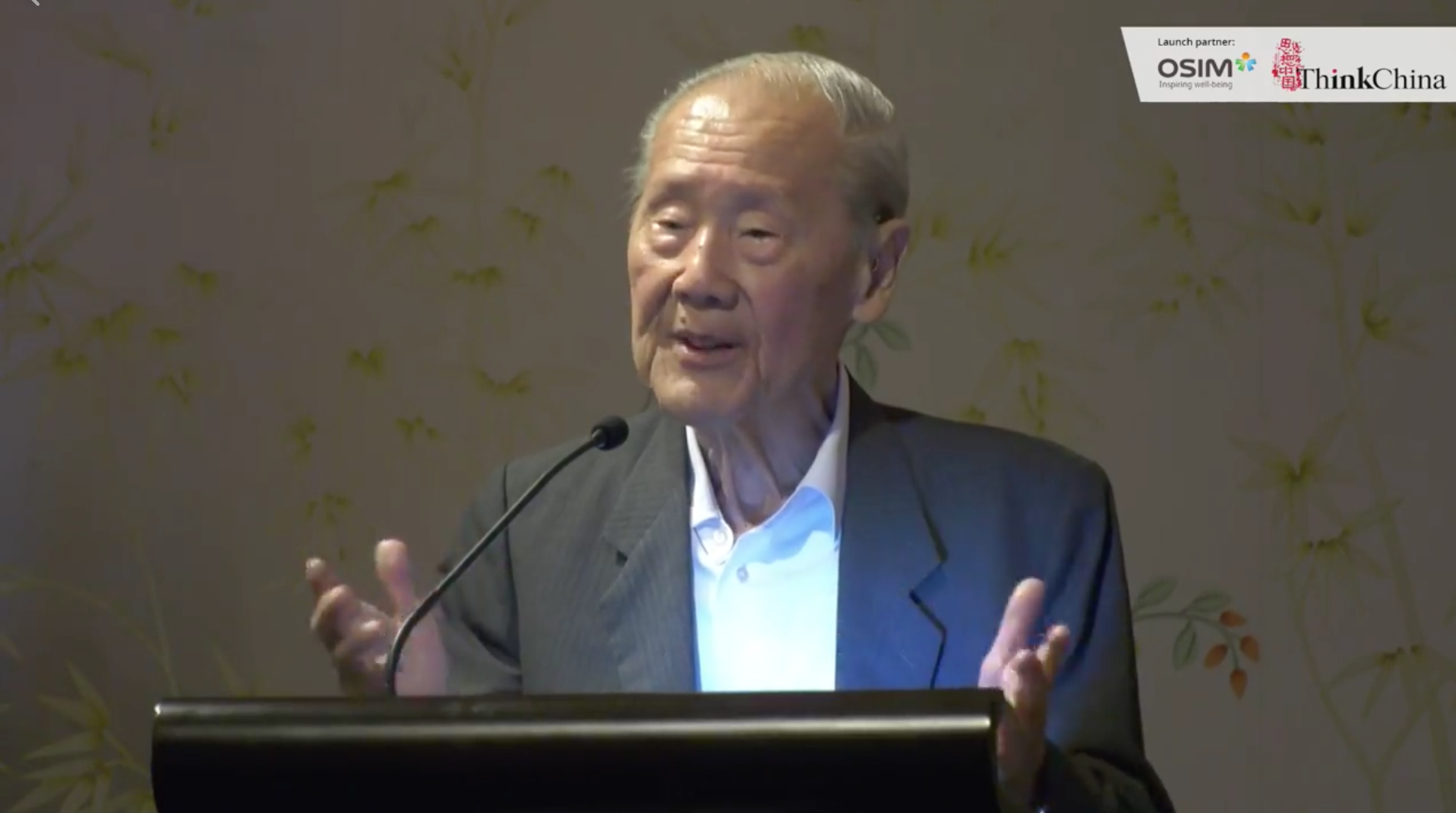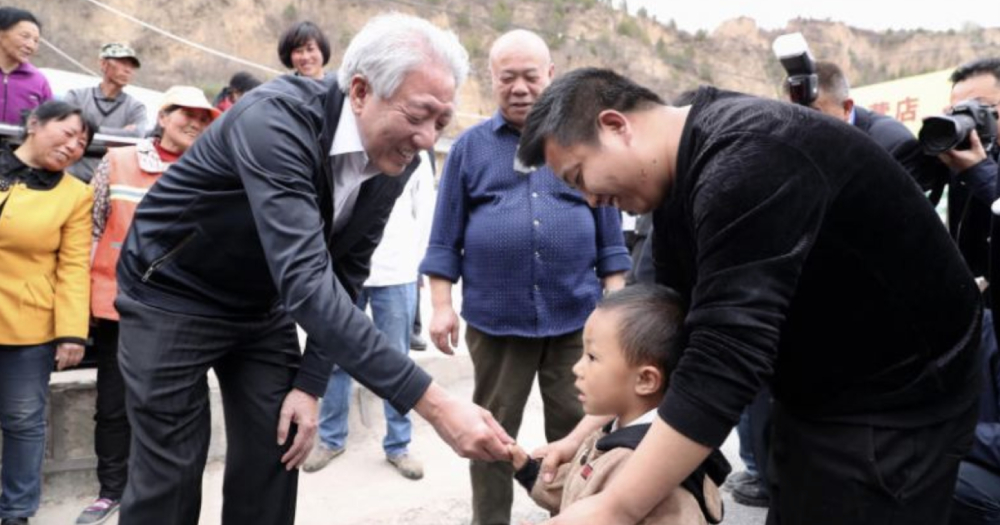Singapore's Chinese-language newspaper Lianhe Zaobao has launched a new online publication that will help Singaporeans understand China better.
Senior Minister Teo Chee Hean, speaking at the launch of the ThinkChina magazine, said Zaobao is well placed to perform this role as it projects a distinctly Singaporean voice, and is able to accurately assess issues relating to China.
 Image by Kayla Wong
Image by Kayla Wong
A free SPH digital magazine on China
Besides publishing stories on China in English, which will allow access to non-Chinese reading audiences, ThinkChina will also feature articles written by academics from the Singapore-based East Asian Institute and other establishments.
The free digital newsletter by the Singapore Press Holdings (SPH) will be updated daily, with a majority of the content selected and translated from Zaobao.
Earlier, Lee Huay Leng, head of SPH’s Chinese Media Group, explained the significance of ThinkChina's logo, saying that the dot on the letter "i" is to "look at China from where we are, as a little red dot".
She also explained that “思想” (think) has its Chinese character “思” slightly tilted, mimicking a person’s tilted head while thinking, while the idea of “想” is for one to stand beside a tree (木), to see with one's eyes (目) and to ponder with one's heart (心).
 Image via ThinkChina
Image via ThinkChina
Understanding China's ambitions will help understanding the path it takes
Noting that China's rise has captured the attention of global readers, Teo said a better appreciation of China's "history and culture", as well as its "driving forces, ambitions and goals", will help Singaporeans understand the trajectory that China chooses to take.
The Coordinating Minister for National Security also co-chaired the Joint Council for Bilateral Cooperation (JCBC) -- the highest-level bilateral platform between Singapore and China -- until Deputy Prime Minister (DPM) Heng Swee Keat took over in April this year.
China faces challenges both domestically and internationally
Teo, who last visited China in an official capacity in April 2019, also expounded on the delicate position China is in today.
While being at an important juncture in terms of its political development and economic transformation, China is also facing social challenges back at home, he said.
For instance, it is grappling with the issues of rural-urban income disparity, an ageing population and environmental degradation.
As for its economics, the world's second largest economy is moving from an "export-driven, low-cost manufacturing base for the world" to creating "new services and products" for its growing middle-class, he said.
China desires a greater role globally
In addition, China has found itself at a different global position as compared to the past.
"Internationally, China faces growing expectations to step up and play a greater role in addressing global issues such as climate change, nuclear proliferation and terrorism," Teo said.
In fact, the nation wishes to be a player in "framing the terms that countries interact with one another", Teo posited.
More than just trade
To make matters even more complicated, China is facing growing tensions with the world's other major power, the United States.
Teo said ongoing tensions between the two powers are not simply about trade, but also about "global influence and China's place in the new international order".
Such a view is consistent with what other Singaporean leaders and academics have expressed in the past.
For instance, Ambassador-at-Large Tommy Koh wrote that the U.S. is not necessarily used to being relegated to being No. 2 in the global system, which might explain its behaviour of "overreaction" in response to China's rising influence.
The U.S., however, has since refuted this claim, saying it does not fear competition, and that it embraces opportunities for partnerships with its rivals as well.
Zaobao an "insider" with "outsider's perspective"
Faced with such a complex, large and diverse country that is China, it is a challenging task to "define and report" on it, Teo said.
This is where Zaobao can play the role of being an "insider" with an "outsider's perspective".
Not only has the publication established a reputation over the years of being "a keen observer of China", its coverage of China has also preserved a "distinctly Singapore perspective", Teo said.
This means it is close enough to feel the pulse inside China, but detached enough to avoid viewing developments from an ideological viewpoint, he explained.
Unique position sets itself apart from both Chinese and Western media
And such a unique position differentiates itself from other media outlets in Greater China and the Western world, Teo opined.
This is why both Singaporeans and foreigners, including those in China, find Zaobao's stories "insightful and worth reading", he said.
Addressing Zaobao directly, Teo said he is "confident that [its] pieces will provide new insights to readers who are interested in China's long-term development, and promote better understanding of Singapore, China and our region".
New media not as good as traditional media
Teo also touched on the changing media landscape, saying that new technologies have brought about benefits such as allowing the public to keep themselves informed and up to date with the latest news.
However, on the flip side, it also "allows others to propagate misinformation, fake news and half-truths", he added.
Teo then raised the example of new media platforms, which have "sparked the growth of citizenship journalism", and can be "pervasive and persuasive".
But such platforms are "not subjected to the same editorial standards of veracity and fact checking, accountability and attribution", which are the hallmark of "high quality traditional media", he said.
Zaobao is an example of a media outlet that holds the "highest standards of journalism", which are "veracity, timeliness, outreach and insight", Teo said.
This will help the publication maintain its "competitive advantage and relevance amidst the ongoing media revolution".
Historian Wang Gungwu on China
Esteemed historian Wang Gungwu spoke at the launch event as well, lending his insight to the differences between the two words that stood out in the last 70 years of Chinese history.
The first word was "revolution", which succeeded in 1949 and led to the establishment of the People's Republic of China.
The second was "reform" that started about 40 years ago.
 Screenshot via ThinkChina/FB
Screenshot via ThinkChina/FB
The two terms are often used together, and even in opposition with each other at times, Wang said.
For instance, there has been debate on which is necessarily better than the other for the country.
The two words are also difficult to unpack.
For instance, the English word "revolution" does not quite capture the full context of the Chinese term ge ming (革命).
While the English term could refer to several things, such as "political, social, industrial, scientific, commercial revolutions", the Chinese term simply means "changing the mandate".
The word "reform" has two separate Chinese words that were used at different periods of Chinese history as well.
They are ga ge (改革), and bian fa (变法) -- the latter of which has a somewhat relatively negative connotation as compared to the former.
At various points in Chinese history, ga ge succeeded in consolidating the previous bian fa, bringing about a successful revolution.
For instance, Deng Xiaoping built on what Mao Zedong did, and managed to pass the reforms that would not have succeeded without Mao helping to clear the various opposition and "vested interests" that were in the way of the reforms.
Such instances of succeeding leaders consolidating the work of previous leaders could be seen at other times in Chinese history as well -- the Emperor Tang Taizong's successful reign over China during the Tang dynasty, in addition to his consolidation of his father's work, is an example.
Wang concluded by saying the relationship between "reform" and "revolution" makes much better sense when the Chinese, drawing on inspiration regarding the Western idea of "progress", keep their eye on "progress" as the means to a better future.
You can listen to both their speeches here:
Top image of Teo at Liangjiahe village in China via Ministry of Communications and InformationIf you like what you read, follow us on Facebook, Instagram, Twitter and Telegram to get the latest updates.
